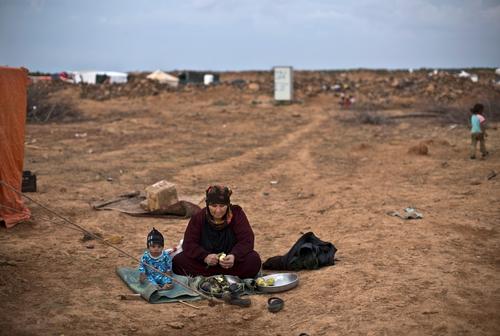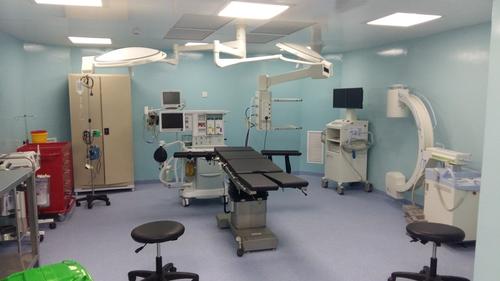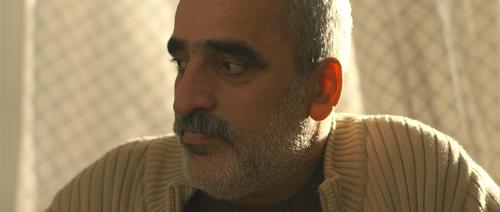- Dr Natalie Thurtle is a Médecins Sans Frontières (MSF) emergency doctor. She shares a very personal and powerful testimony from eastern Jordan, where we are trying to ensure thousands of people trapped on the border with Syria receive humanitarian assistance.
- ‘Berm’ /bəm/ an artificial ridge or embankment, such as one built as a defences
Syria. Eleven million displaced. Four hundred thousand deaths. These are approximations. At this juncture, deaths and displaced persons are estimated in zeros, the individual simply disappears.
In November 2015, the border between southern Syria and northeast Jordan was significantly tightened. People running for their lives from the conflict in Syria began gathering between two earthen ridges at the border – otherwise known as ‘the Berm’. The Berm is not a refugee camp. There are no latrines, no intrinsic water, no consistent food or healthcare. The latest estimated number of people there is between 60,000 and 100,000.
Hidden amongst the zeroes of these numbers are people, individuals, ‘ghosts’ – existing neither in the world they have left nor the world they are running to – trapped, it could be said, between life and death.
For months, MSF and other agencies were involved in protracted negotiations to gain access to the Berm to provide basic health care. The main issue was security, the concern that any humanitarian activities would loosen the border and put Jordan at risk of the fate of its neighbors.
By 16 May, agreement had been given for MSF to start basic health care activities at a service area on the outside of the Berm. Work began immediately. On 21 June, a vehicle-born improvised explosive device exploded at the border, killing seven Jordanian soldiers. Humanitarian access to the Berm was immediately and indefinitely shut down.
I arrived in Amman in July, in the last days of Ramadan to take on field-level medical leadership of the Berm project.
I meet the woman who, for the last month, has been in the role I am planned to take on; she is an experienced clinician. She has what I call ‘leaky eyes’. It’s not crying exactly, it’s an inability to stop water falling from your eyes when you talk. It comes when someone starts to decompress.
Throughout the day I talk with her and the midwife from the project who is also in Amman for a break. I came wondering if I would be setting up the medical intervention, or systematizing something that was done ad hoc, reactively. It becomes clear very quickly that it is already done: tight, superbly organized and a thing of beauty, the very best that could have been done in the tiny window they had.

They describe and draw diagrams of the setup, how triage and registration were running and how they saw hundreds of patients a day in the 40 degree Celcius heat. These details are humanized with stories: the joy of delivering a baby; the pain of a beautiful girl critically unwell but not permitted for referral into Jordan; the sand storms that turn everything black in an instant; the people whose skin is scorched by the desert. It is so hard for this team, who saw the need, looked at those faces, touched the skin. We switch between past and present tense. It is a strange handover, the handing over of a ghost project.
In one month, they saw over 3,500 patients for malnutrition, diarrhea, skin lesions, diseases of hygiene and poverty. Many more were not seen.
When I finally arrive, the cars and trucks are gone, the pharmacy is locked and the dust is gathering. A skeleton team remain: a nurse, a project co-ordinator and me.
We sit in the desert with the Iraq border to the East and the Syrian border to the north. The Berm is a much longer drive northeast off-road. We toss and turn at night in the oppressive heat; in the empty houses we see ghosts. The variables swim in my mind, what is happening to the people in the Berm, what are we doing to them by our absence? How can we get access to them? What are the alternatives?
What we know is that we can’t leave, not yet. Being here is important, trying to get back there is important, speaking of it is important, a manifestation of the MSF pillar of témoignage (bearing witness and speaking out on behalf of the people we assist). The people in the Berm may be stuck between life and death and this may be a ghost project, but they are not ghosts. They are the same as you and me and a way must be found for the people in the Berm.





